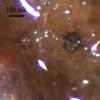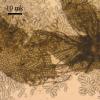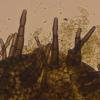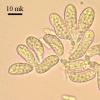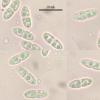
20-12-2025 23:08
Patrice TANCHAUDBonsoir, récolte sur sol sablonneux dans l'arri�

20-12-2025 15:47
Mirek GrycHi.These grew on pine wood that was heavily covere

18-12-2025 21:17
Pol DebaenstThe identification took me to Byssonectria deformi

15-12-2025 07:09
 Danny Newman
Danny Newman
indet. Rutstroemiaceae sp. on unk. fallen leavesMc

19-12-2025 10:10
Patrice TANCHAUDBonjour, récolte réalisée en milieu dunaire, a

18-12-2025 17:23
 Bruno Coué
Bruno Coué
Bonjour,je serais heureux d'avoir votre avis sur c

18-12-2025 18:07
Margot en Geert VullingsThese plumes were found on rotten wood.They strong

17-12-2025 18:35
 Michel Hairaud
Michel Hairaud
Bonjour à tous/Hi to everyone I am passing along
i am currenly working with collection of Perithecia-forming species inhabiting Andromeda leaf litter. My orientation in the systematic space of this group is still poor. Could you possibly give me a clue on approximate position of this representative?, it seems beautiful and distinctive one.
On fallen leaves of A. polifolia, C. calyculata, L. palustre in raised bog community.
Ascomata scattered on both sides of the leaf, sphaerical, superficial, setose around the pore, and with descending hyphae in lower part, up to 150 mk in diameter.
Setae brown, septate, thick-walled, straight and short near the pore, bent and longer outward, 40-80 mk long, 8 mk broad at base, narrowing to obtuse tip; descending hyphae brown, septate, about 1 mk broad; asci clavate, attached to stalks which connected together in bunches, 20–23 x 8–9.6 mk, dehiscence mode unclear; hamathecium from elongated thin elements surrounded by gelatinous substance; spores hyaline, two-celled, with deep constriction, with many small to medium oil guttules, measured in vital state 10 (9–1.8) x 3.5 (3.3–3.9) mk (n=22).
i am still searching any information about this taxon. It is puzzling ). It may belong to Mycosphaerellaceae because absence of paraphyses, two-celled hyaline spores and fasciculate asci. But i could not decide any precisely about genus and species.
Nina.

Check von Arx and Müller (1975) Studies in Mycology n°9 (available here: http://www.cbs.knaw.nl/index.php/studies-in-mycology/378-studies-in-mycology-no-9).
Did you noticed the presence of superficial hyphae too? Could be a Wentiomyces or Epipolaeum species, but the habitat is uncommon and both are more frequently found on live leaves. Aditionally, Epipolaeum has coloured ascospores, and your specimen appears to be hyaline, at least initially.
Good luck.

